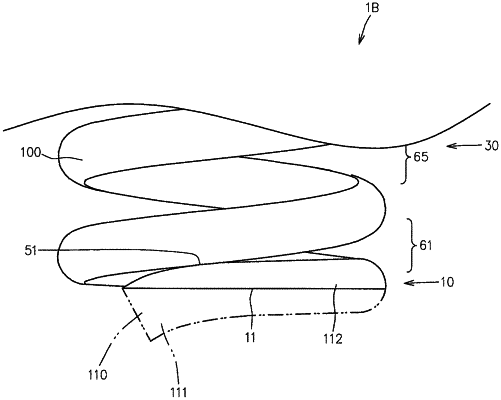| CPC F16F 1/06 (2013.01) [F16F 1/047 (2013.01); F16F 1/123 (2013.01); F16F 2238/026 (2013.01)] | 3 Claims |

|
1. A coil spring having a spring wire formed into a helical shape axially extending from one side to another side, the coil spring comprising:
a first end coil part having a first bearing surface that is arranged on one side in the axial direction of the coil spring and faces the one side in the axial direction of the coil spring;
a second end coil part having a second bearing surface that is arranged on the other side in the axial direction of the coil spring and faces the other side in the axial direction of the coil spring; and
a central coil part between the first and second end coil parts,
wherein the first end coil part includes a first end coil part edge region that extends from a first end on one side in the axial direction of the coil spring to a part forming a first reference point, where a space between coils that are adjacent to each other in an axial direction is zero in the natural length state on one side in the axial direction, and a first end coil part transitional region that extends from the first end coil edge region to the central coil part,
wherein the first end coil part edge region is bent toward one side in the axial direction of the coil spring as compared with the first end coil part transitional region, and
wherein the first bearing surface extends from the first end coil part edge region to the first end coil part transitional region across a border between the first end coil part edge region and the first end coil part transitional region.
|